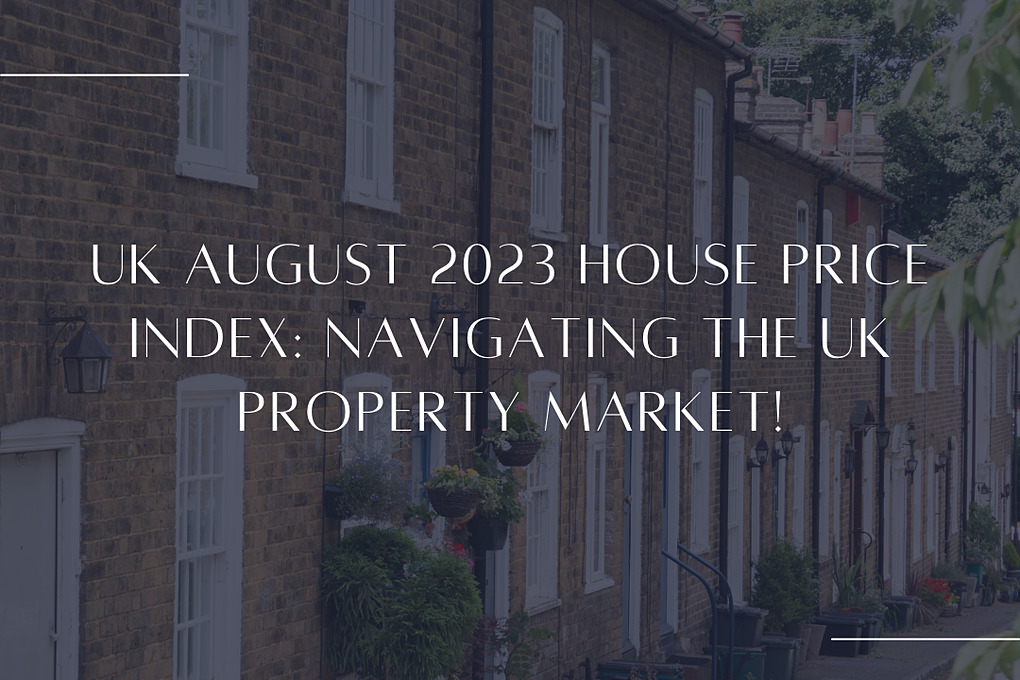UK August 2023 House Price Index: Navigating the UK Property Market

- Sep 1st 2023
The UK property market finds itself at a crossroads, grappling with the profound implications of elevated mortgage rates, all amid the backdrop of escalating living costs. As we delve into our House Price Index for August 2023, we unearth a nuanced narrative of resilience, challenges, and potential.
Key Highlights
- Modest Growth: Over the past year, UK house prices have experienced a meagre 0.1% uptick, marking the slowest rate of increase since 2012.
- Regional Disparities: The annual variation in house prices across the UK paints a diverse picture, with Scotland basking in a healthy growth of +1.7%, while London and the Southeast witness a dip of -1%.
- Property Sales Decline: The volume of property sales this year has descended by a staggering 21% compared to 2022.
- Mortgage-Backed Sales Slump: Projections indicate that mortgage-backed sales are likely to plummet by 28% this year due to the influence of higher mortgage rates, while cash sales remain relatively resilient.
- Salutary Wage Growth: Amidst these challenges, the silver lining appears in the form of rapidly increasing wages, which are, to a degree, bolstering housing affordability.
The Mortgage Rate Conundrum
The primary damper on the housing market’s exuberance remains the daunting spectre of elevated mortgage rates. Their omnipresence has triggered a cascade of consequences, including a waning demand from prospective buyers, a discernible decrease in the volume of sales, and a pervasive deceleration in house price growth.
Our House Price Index data for August 2023 portrays a market activity level well below the peak witnessed during the pandemic years, albeit mirroring the conditions prevalent in 2019.
Dwindling Buyer Appetite
In a telling sign of the times, the last four weeks have borne witness to a 34% decline in buyer demand compared to the five-year average spanning from 2018 to 2022. Agreed property sales have followed suit, declining by 20%.
Interestingly, the increase in the supply of homes for sale over the past two years has partially mitigated the impact of reduced demand.
Regional House Price Shifts
The overall slowdown in house price inflation over the past year, resulting from diminished demand, heightened price sensitivity amongst buyers, and dwindling sales, is underscored by the annual UK house price growth rate of 0.1%. This constitutes the lowest growth rate observed in 11 years, harking back to August 2012.
Notably, there exists a distinct geographical divide in house price inflation, with Southern regions experiencing price contractions of up to -1% over the past year. In stark contrast, all other regions and nations of the UK continue to witness modest single-digit house price growth. Scotland emerges as the frontrunner in this regard, boasting a commendable house price growth rate of +1.7%.
Affordability Dynamics
The disparities in house price growth across the UK can be partially explained by the capacity of first-time buyers to secure mortgages at higher rates. As the driving force behind one-third of annual property sales, the affordability of buying versus renting plays a pivotal role in shaping the market.
The recent surge in mortgage rates, however, has altered this equation. It is now 10% cheaper, on average, to rent rather than buy in the UK, despite the notable rise in rental costs in recent years. This shift in the financial calculus is curtailing the influx of first-time buyers into the market, thereby exerting a drag on house price growth.
Regional Variations in Affordability
The landscape of affordability for aspiring first-time buyers exhibits marked regional variations. In regions characterised by lower house prices, buying remains an economically prudent choice. In Scotland and the North East, average mortgage repayments are up to 18% lower than rental costs, thus fostering accessibility to the housing market and fuelling demand.
Conversely, Southern England and the Midlands present a different picture. Here, it is more economical to rent than to buy across all areas. In London, the average mortgage repayment surpasses monthly rent by 24%. These regional nuances underline the reason why house prices are witnessing the most substantial declines in the South of England.
Future Projections
While house price growth has undergone a noticeable deceleration, the most palpable consequence of elevated mortgage rates has been a contraction in property sales. According to our House Price Index, property sales under 'sold subject to contract' status are projected to plummet by 21% in comparison to the previous year, setting the stage for the lowest sales volume since 2012.
Notably, this decline is primarily attributed to mortgaged buyers, with an anticipated 28% reduction in the number of mortgaged sales for this year. On the other hand, cash sales are expected to weather the storm with a marginal 1% decline from 2022.
Landlords in the Crosshairs
Higher mortgage rates are not sparing landlords either. Mortgaged buy-to-let purchases typically constitute about 8% of property sales in the UK. However, the exigencies of this market segment now demand investors to possess equity amounting to 40-50% of the property's value to ensure financial feasibility. This adjustment is expected to constrain new investments in the sector for the current year.
Flexible Working & First-Time Buyers
Despite these challenges, first-time buyer numbers are poised to remain relatively stable. The advent of flexible working arrangements offers prospective buyers the freedom to explore more affordable markets, where the cost of buying is more attractive than renting. Additionally, the growing availability of homes suitable for first-time buyers, typically priced 25% below the broader market, is contributing to sustaining demand.
The Affordability Equation
Affordability remains the pivotal factor influencing the trajectory of the UK housing market. This encompasses both house prices and the associated mortgage repayment costs. The affordability conundrum is most pronounced in Southern England, where a household income exceeding £75,000 is a prerequisite for home-ownership in many areas. Despite mortgage rates soaring by 23% year-on-year, the substantial 7% wage growth over the same period is serving to alleviate the pressure on housing affordability. Consequently, the house price-to-earnings ratio is anticipated to improve by 9-10% over the course of 2023.
This translates to a UK house price-to-earnings ratio of 6.3x by year-end, aligning with the average observed over the last two decades. Particularly encouraging is the marked improvement in affordability in London, with the house price-to-earnings ratio dipping into single digits for the first time in over a decade.
What Lies Ahead
Looking ahead, prospects for the property market appear promising. Factors such as greater flexibility in working arrangements, demographic trends arising from an ageing population, a robust labour market, and sustained immigration are poised to incentivise increased property transactions.
Furthermore, the gradual decline in mortgage rates, which are expected to dip below the 5% threshold later in the year, presents a favourable outlook for improving affordability and reigniting market activity. However, the tangible impact of these lower rates on the market is unlikely to be fully realised until at least the first half of 2024.
Hence, the expectations for house price growth remain restrained, with projections suggesting that it will largely hover within the +2% to -2% range in the foreseeable future.
For a more in-depth understanding of the evolving property landscape and expert guidance tailored to your unique circumstances, do not hesitate to contact our dedicated team on 0116 266 9977. We are committed to shedding light on the complex dynamics of the UK property market.








